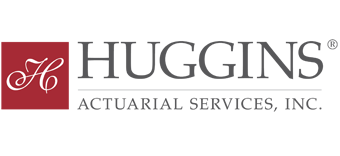Evaluating Risk with Economic Capital Modeling
What You Need to Know About Economic Capital Modeling
By Steven Lesser, FCAS, MAAA, Huggins Actuarial Services, Inc.
What is economic capital?
Economic capital is defined as the amount of financial resources that an institution must theoretically hold to ensure the solvency of the organization at a given confidence level and given the risks that it is expected to take. This standard should be recognized as the capital that is needed within a company to achieve its business objectives, not as the baseline amount of capital to be held in order to stave off regulatory action.
Why should a company care about economic capital?
Evaluating economic capital should be an essential part of strategic and tactical decisions for an insurance entity. The level of economic capital affects many areas of operations including risk appetite and limit setting, measurement of performance, and investment philosophy. Inadequate funding can lead to ratings downgrades by rating agencies and possible regulatory actions.
The current framework for evaluating economic capital began after the 2008 global financial crisis, which lead state insurance regulators to strengthen their supervisory framework and increase scrutiny of non-insurance activities and potential reputational and systemic risks. In November 2011, the National Association of Insurance Commissioners (“NAIC”) introduced a pivotal regulatory tool: the U.S. Own Risk and Solvency Assessment (“ORSA”).
The NAIC Risk Management and Own Risk and Solvency Assessment Model Act became effective on January 1, 2015. ORSA was designed to require insurers to perform an internal assessment of the risks that could affect the solvency of their particular operation, and to stress test their operations to determine whether there could be an unforeseen set of circumstances that could cause the company to suffer a loss of capital that would impair its solvency. If such impairment could occur within the required projected time span, the company would be required to produce a plan to modify its operations to reduce or eliminate the risk. This might take the form of reducing or shifting the amount of business written within a given line or state, or the implementation of a rate increase, or stricter underwriting.
The Model Act requires large and medium-size U.S. insurers and insurance groups to conduct an ORSA regularly and document the results in an ORSA Summary Report. ORSA applies to individual insurance companies in the United States that write more than $500 million in annual direct written and assumed premiums, as well as insurance groups where the collective premium exceeds $1 billion annually.
Even if an insurer’s total premium is below the cutoff, it is still advantageous to perform such an assessment in order to be sure that there are no ‘land mines’ that could seriously affect the ability of the company to continue to operate and to expand operations.
In addition to insurance regulators, rating agencies such as A.M. Best Company include an assessment of company-specific risk in their determination of insurer credit rating. A company’s rating is subject to greater variation from the majority of firms of similar composition if it exhibits a higher risk profile, excessive earnings variability or is involved with comparatively riskier business segments.
For those insurers seeking to maintain a high rating, perhaps due to a requirement from their reinsurer or fronting carrier, it will behoove them to assess their inherent risk and develop enterprise risk management tools that will allow them to focus on those facets of their operation that involve the most risk and come up with ways to reduce that risk, so that their balance sheet is not subject to excessive fluctuation even under unforeseen circumstances. The primary tool to accomplish this is economic capital modeling.
How does economic capital modeling work?
Economic capital modeling (“ECM”) is essentially a probability-based scenario generator for determining the future financial results of an insurance organization. The usual starting point is the modeling of all of the existing and/or proposed exposures of the company’s business through the operational components of insurance, reinsurance, claim and expense payments, and the investment of funds. Detailed information about the insurer’s operations is entered into a modeling package and the package generates equally likely alternate versions of the financial statements for a number of prospective years. Key risks modelled in ECM include underwriting, reserve, natural catastrophe, asset, and reinsurance credit risk. A key component of the model includes credible scenario and stress testing that measures the possible variability of the future results.
What data is needed to run the model?
Several types of data are needed. Balance sheet inputs include assets (cash, bonds, common stock, other asset classes, surplus) and liabilities (loss and loss adjustment expense reserves by line or sub-line and payment patterns for existing reserves, unearned premium reserve, and other liabilities). Line of business inputs include direct written premium, underwriting expenses, earnings patterns, and claims counts. Reinsurance inputs include reinsurance contract terms along with specific catastrophe reinsurance terms, reinsurance catastrophe modeling results, ceded premium, ceded reinsurance attachment point, and ceded reinsurance limit.
For a small company, which frequently may have a relatively low retention level, the terms of its reinsurance treaties have particular importance in the model. If loss experience worsens in the coming periods, depending on the relationship of the average claim size to the company’s retention, there may be a significant worsening of loss experience with a corresponding decrease in the available capital of the company. In addition, depending on the particular perils written by the company, management should investigate the potential for a single catastrophe to have a negative effect on multiple lines of business, such as property, automobile physical damage and homeowners.
ECMs also simulate various economic scenarios by employing an Economic Scenario Generator (“ESG”). ESGs simulate future states of the global economy and capital markets, using economic models to provide full market risk and asset class coverage. They can estimate changes in inflation, wages and Consumer Price Indices as well as estimates of investment returns and default risk.
What does an economic capital model report output look like?
An economic capital model will produce pro forma financial statements including balance sheet and income statement over a number of future years. It should also calculate and display cumulative probability density functions. These functions can compare results based on differing assumptions and include the effect of catastrophe losses. The functions show the value at risk and tail value at risk (TVaR). The latter is a weighted estimate of the losses in excess of a given probability, such as one in a hundred or one in a thousand. While such losses are by nature extremely infrequent, good management will still examine the TVaR. If such a loss were to occur, it could result in a loss of capital to the point where the company might be unable to continue in operation.
The key to success will be the creation of a timely and understandable flow of information across all facets of the company’s operation that will enable management and the board of directors to make timely and appropriate decisions, and to take appropriate remedial action when it is required. Insurance entities that accomplish this should flourish, even in difficult economic times, and will find themselves able to react more quickly to any changes that may occur in the future.




